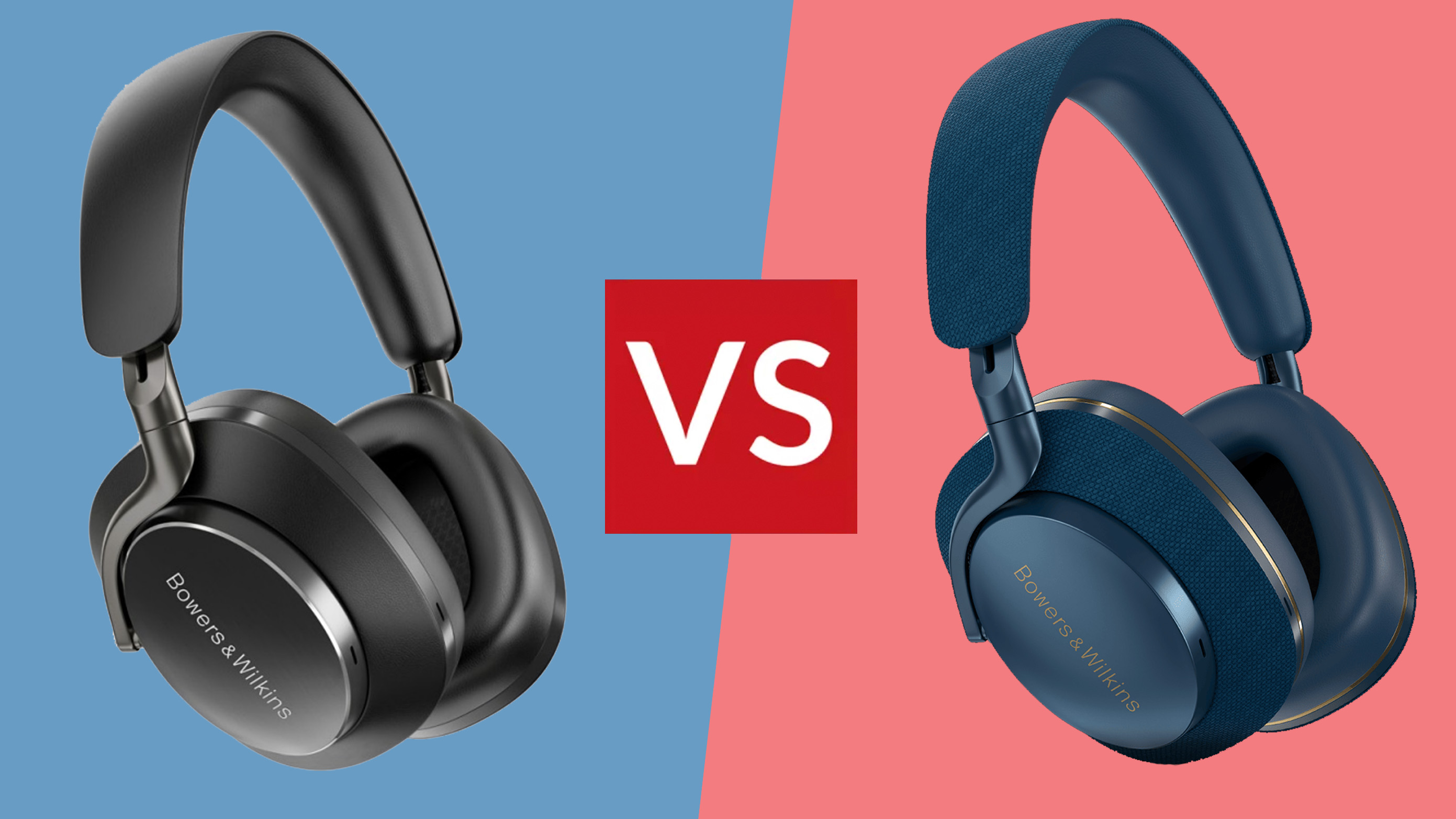Bowers & Wilkins PX8 vs PX7 S2: What's the difference?
I've tried and tested both over-ear B&W headphones, here are their biggest differences compared

Bowers & Wilkins makes some of the best headphones products, as T3's review of the company's PX7 S2 attests. But now there's an even newer, higher-end over-ear product from the audio brand: the PX8.
Logic would dictate that '8 is better than 7' and, indeed, that is the way Bowers & Wilkins positions the PX8 above the PX7 S2. But, to look at, you might think both headphones look rather similar. And I'd agree: they do, from afar at least. But it's when you get into the details of what's on offer and the materials and finishes used that the true differences are revealed.
I've tried and tested both the PX7 S2 and PX8 at a brief listening session at Bowers & Wilkins' headquarters, so here are the key differences between the two products and why you might consider one over the other.
B&W PX7 vs PX8: Design & materials
In terms of overall size and shape the PX7 S2 and PX8 are very closely aligned, you could mistake one from the other if only looking at a silhouette.
But the PX8 ups the ante in terms of finish and materials. It uses a diecast aluminium arm structure, whereas the PX7 S2 is polymer (i.e. a form of plastic). The PX8 also has diamond cut edging on the elliptical logo plate, whereas the PX7 S2 does not.
The PX8 also uses Nappa leather for its earcups to ensconce your ears, whereas the PX7 S2 uses a faux leather. If you want vegan materials then the former won't be for you, as it smells (unsurprisingly) like leather.
It's the use of these materials that make the PX8's 320g total a few grammes heavier than the PX7 S2's 307g, but that's no surprise. Bowers & Wilkins says it's had to rebalance the PX8 as a result of this for a better fit. I find the two products fit similarly to one another, but the real leather gives a much more 'enclosed' feeling when on the head; I find the PX7 S2 feel more 'commuter ready' as a result, the PX8 more 'at home' cans.
Get all the latest news, reviews, deals and buying guides on gorgeous tech, home and active products from the T3 experts
The finish continues to the carry cases of both products too: the PX8 has a leather strap from its zip, the PX7 S2 sticks with material. It's the small touches, right?
Oh, and while the PX7 S2 come in Grey, Black and Blue options, the PX8 come in Tan or Black only (given the Nappa leather finish, that's hardly a surprise).
B&W PX7 vs PX8: Drivers & sound quality
Both the PX7 S2 and PX8 feature 40mm drivers. But that's far from the whole story, as while the two measure the same physical size, the two driver technologies are entirely different. Let me explain.
The PX7 S2's driver is made from biocellulose and resin, while the PX8's driver is crafted from carbon fibre and resin. The former has a 15mm voice coil, the latter's is 30 per cent larger, at 20mm. The PX8's driver is therefore stiffer and this means it behaves better for longer, delivering lower total harmonic distortion (THD), particularly towards the higher-end of the frequency range.
That's the thing about the PX7 S2 and PX8: the two deliver the same frequency range, the two can handle the same codecs (aptX Adaptive) and therefore same quality audio sources, the two angle their drivers (to around 15 degrees) to deliver a more uniform sound to the ears across the full range. But the two differ in their treatment of a signal given the way their drivers can output and control sound. In short: the PX8 is aimed more at audiophiles.
Do I think the two sound particularly different? They do, but it'll be marginal for most people, and I actually find the Nappa leather of the PX8 to give a more 'enclosed' feeling when wearing which, in itself, changes the perception of your environment anyway (even when no music is playing).
B&W PX7 vs PX8: Active noise-cancelling (ANC)
Active noise-cancelling (ANC for short) is all the rage in the world of headphones at the moment. If you want it super strong, to really and truly cancel the world around you then, well, Bowers & Wilkins isn't really the brand for that (I'd suggest going to Sony for its WH-1000XM5 instead).
And the PX8 aren't here to change Bowers & Wilkins' stance on what ANC should do: just as with the PX7 S2 it's a subtle delivery, one that helps curtail some environmental noise, and in doing so will engage the lower-frequency delivery slightly more convincingly while doing so.
Both PX7 S2 and PX8 use the same ANC system, with the same number of mics, same Alango-based digital signal processor, and therefore deliver the same results. Subtle, delicate ANC that's best for engaging you more with your listening experience, not removing the world around you entirely would be my take.
B&W PX7 vs PX8: Price & availability
The Bowers & Wilkins PX7 S2 went on sale at the tail-end of June 2022, priced at £379/$399/AU$599.
No surprise, then, that the PX8 and its higher-end materials will result in a more expensive product when they go on sale late September. Pricing is confirmed as £599/$699.
That places the PX8 into Apple AirPods Max and Master & Dynamic MW75 territory. I'd call that esteemed company, for sure, but neither of those competing products have the same daresay 'traditional' approach with materials and finish. It's this, plus the sheer technological clout, that will put the PX8 in favour with audiophiles, I'm sure.
As for whether you should buy the PX7 S2 or PX8? Well, I think that comes down to the type of listener you are and where you intend to be listening, really. The former could get away with being prized commuter headphones. The latter? I'd keep those at home (probably under lock and key, given the asking price).

Mike is T3's Tech Editor. He's been writing about consumer technology for 15 years and his beat covers phones – of which he's seen hundreds of handsets over the years – laptops, gaming, TV & audio, and more. There's little consumer tech he's not had a hand at trying, and with extensive commissioning and editing experience, he knows the industry inside out. As the former Reviews Editor at Pocket-lint for 10 years where he furthered his knowledge and expertise, whilst writing about literally thousands of products, he's also provided work for publications such as Wired, The Guardian, Metro, and more.
